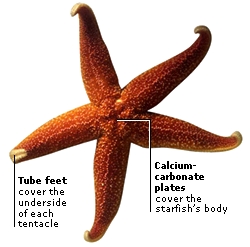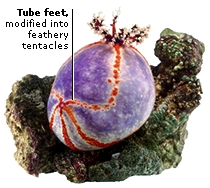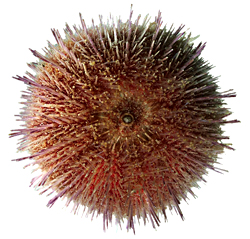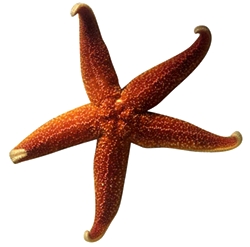Echinoderms have a spiny body that usually divides into five equal parts. They walk on hundreds of tube feet that are full of water. If they lose part of their body, they can regrow it. They have a skeleton of calcium-carbonate plates.

A starfish moves by pulling itself along on the sucker-like tube feet underneath its arms. These strong feet also enable the starfish to force open the shells of molluscs such as mussels or oysters. As the mollusc’s muscles weaken and the shell opens, the starfish pushes its stomach out through its mouth and into the shell to digest the mollusc.

The sea cucumber’s tube feet are grouped around its mouth and filter food from the sand. If it is attacked, the cucumber pushes out its stomach and reproductive parts for the predator to take. The sea cucumber then grows replacement parts.

Sharp spines cover the sea urchin’s hard skeleton and protect it from attack. Tube feet cover its body and spread between the spines. The sea urchin grazes on algae and small animals, with sharp jaws situated underneath its body.
PHYLUM: ECHINODERMATA
Class: Asteroidea
Features: central mouth on underside, surrounded by arms (usually five)

Class: Echinoidea
Features: spherical skeleton covered in spines

Class: Crinoidea
Features: mouth faces upwards, feed on plankton
Class: Holothuroidea
Features: sausage-like body with tentacles around mouth







0 comments:
Post a Comment